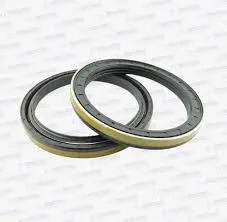10 月 . 31, 2024 18:21 Back to list
Exploring the Importance of Shock Absorber Oil Seals for Vehicle Performance and Safety
Understanding Shock Absorber Oil Seals
Shock absorbers play a crucial role in maintaining the comfort and stability of a vehicle. They control the impact and rebound movement of the vehicle's springs and suspension, ensuring a smooth ride. One of the vital components within a shock absorber is the oil seal, which plays an essential role in its functionality. This article explores the significance of shock absorber oil seals, their types, materials, and maintenance tips.
The Importance of Oil Seals
Oil seals are designed to prevent the leakage of hydraulic fluid from the shock absorber, which is crucial for the damping process. A properly functioning oil seal maintains the shock absorber's performance and prolongs its lifespan. When the seal is damaged or worn out, hydraulic fluid can escape, leading to reduced effectiveness and ultimately resulting in poor ride quality. If the shock absorber loses its oil, the vehicle may experience excessive bouncing, swaying, and reduced traction, especially during cornering.
Types of Shock Absorber Oil Seals
Shock absorber oil seals come in various designs, tailored for different applications and performance requirements. Common types include
1. Single-lip Seals As the most basic type, single-lip seals consist of a single sealing lip that prevents fluid from leaking out. They are suitable for standard applications but may not provide adequate protection in harsh conditions.
2. Double-lip Seals These seals feature two sealing lips, providing enhanced protection against fluid leakage and dirt ingress. They are ideal for off-road vehicles or those operating in abrasive environments.
3. Radial Seals Radial oil seals are designed to function under high pressures and temperatures. Their elastomeric materials can withstand varying conditions, making them suitable for performance applications.
Materials Used
shock absorber oil seal

The longevity and effectiveness of oil seals depend on the materials used. Common materials include
- Nitrile Rubber (NBR) This is the most common material used for oil seals due to its excellent resistance to petroleum-based fluids, high temperatures, and wear.
- Fluoroelastomers (FKM) These seals offer superior chemical resistance and are ideal for extreme conditions, providing protection against aggressive fluids.
- Polyurethane This material is increasingly used for its durability and resilience, making it suitable for high-performance applications.
Maintenance Tips
To ensure the longevity of shock absorber oil seals, regular inspections and maintenance are essential. Here are some tips
1. Visual Inspection Regularly check for signs of leakage around the shock absorber. If you notice fluid on the exterior, it may indicate a failing seal.
2. Cleanliness Keeping the area around the seals clean can prevent dirt and grime from causing premature wear. Use a soft cloth to wipe away debris regularly.
3. Replacement If you notice any performance issues, such as excessive swaying or bouncing, have the shock absorbers inspected. A worn oil seal often necessitates a replacement of the entire shock absorber.
In conclusion, shock absorber oil seals are integral components that ensure the efficient functioning and durability of shock absorbers. Understanding their importance, types, and maintenance can help vehicle owners avoid common issues and prolong the life of their suspension system, ultimately enhancing the driving experience. Regular checks and proactive maintenance will keep the vehicle riding smoothly and safely on the road.